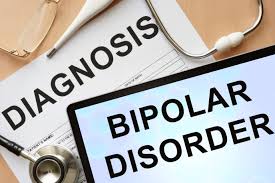Bipolar disorder is a mental illness that is characterized by extreme mood swings. Patients with bipolar disorder can experience periods of mania, during which they feel extremely happy and energetic, and periods of depression, during which they feel very sad and hopeless. The goal of this blog post is to provide an overview of bipolar assessment – what it is, how it works, and who should undergo it.
Contents
- 1 What Is Bipolar Assessment?
- 2 Uses of Bipolar Assessment
- 3 Types of Bipolar Assessment
- 3.1 Mood Disorder Questionnaire (MDQ)
- 3.2 Mood Disorder Questionnaire-Self Report (MDQ-SR)
- 3.3 Mood Disorder Questionnaire-Adolescent (MDQ-A)
- 3.4 Kidscreen-27 Bipolar Module
- 3.5 Bipolar Spectrum Diagnostic Scale (BSDS)
- 3.6 Bipolar Inventory of Symptoms Scale (BISS)
- 3.7 Childhood Onset Bipolar Disorder Scale (COBD)
- 3.8 Wong and Law Bipolar Disorder Rating Scale
- 4 Elements of Bipolar Assessment
- 5 Drawbacks of Bipolar Assessment
- 6 Conclusion
What Is Bipolar Assessment?

Bipolar assessment is the process of determining whether an individual has bipolar disorder. Bipolar disorder is a mental illness that is characterized by extreme mood swings. These mood swings can range from periods of intense energy and activity, known as mania, to periods of depression.
When assessing for bipolar disorder, healthcare professionals will typically ask about an individual’s family history of mental illness, as well as any personal history of mental illness. They will also perform a physical examination and order blood tests to rule out other potential causes of the symptoms.
If you are concerned that you or someone you know may have bipolar disorder, it is important to seek professional help. A trained mental health professional can properly assess for the condition and provide the necessary treatment.
Uses of Bipolar Assessment

There are many uses for bipolar assessments. Some of these are:
Helps To Diagnose Bipolar Disorder
One common use is to help diagnose bipolar disorder. Bipolar disorder is a mental illness that is characterized by extreme changes in mood. These changes can include periods of mania, where a person feels excessively happy or irritable, and periods of depression, where a person feels extremely sad or hopeless. Bipolar disorder can be difficult to diagnose because it can resemble other mental illnesses, such as depression. A bipolar assessment can help to rule out other possible diagnoses and confirm a diagnosis of bipolar disorder.
To Track Bipolar Symptoms
Bipolar assessments can also be used to track the symptoms of bipolar disorder over time. This information can be used to help determine whether a person’s symptoms are getting better, worse, or staying the same. This information can also be used to help plan treatment.
One of the most important uses of bipolar assessments is to help people with bipolar disorder track their symptoms. This can be done by keeping a mood chart. A mood chart is a tool that allows people to track their moods daily. This information can then be used to help identify patterns in a person’s mood swings.
Mood charts can be used to:
- Track the frequency and severity of mood swings
- Identify patterns in mood swings
- Monitor the effects of treatment
- Provide information to doctors about a person’s condition
To Monitor Bipolar Treatment
Bipolar assessments can also be used to monitor the effectiveness of treatment for bipolar disorder. This information can help doctors and therapists to adjust treatment plans as needed. Sometimes several different types of treatment can be effective for bipolar disorder. A bipolar assessment can help to determine which type of treatment is most effective for a particular person.
To Help People with Bipolar Disorder
Bipolar assessments can also be used to help people with bipolar disorder to understand their condition and to make informed decisions about their treatment. This information can help people with bipolar disorder to:
- Learn about their condition
- Understand their treatment options
- Make informed decisions about their treatment
- Monitor their symptoms
- Track the progress of their condition
The above are only a few of the uses for bipolar assessments. This type of assessment can be an important tool for people with bipolar disorder, as well as for their families and friends.
Types of Bipolar Assessment

There are many types of bipolar assessment tools available, each with its strengths and weaknesses. It is important to select the right tool for the job, as some are better at diagnosing bipolar disorder while others are better at tracking symptoms over time.
Some of these types are:
Mood Disorder Questionnaire (MDQ)
This is one type of bipolar assessment. The MDQ is a multiple-choice questionnaire that takes about 10 minutes to complete. It is designed to screen for bipolar disorder and is not intended to be used as a diagnostic tool.
The MDQ is composed of 13 questions about symptoms experienced over the past year, with yes or no answers. A score of 7 or more indicates a possible diagnosis of bipolar disorder.
Mood Disorder Questionnaire-Self Report (MDQ-SR)
The Mood Disorder Questionnaire -Self Report (MDQ-SR) is a self-report screening measure for bipolar disorder.
The MDQ is an accurate and reliable tool for identifying individuals with bipolar disorder and can help to differentiate between those with and without the condition.
The MDQ consists of 19 items that ask about symptoms experienced during the person’s lifetime.
Each item is rated on a scale from 0 to 4, with 0 being “not at all” and 4 being “very much/most of the time.”
A total score of 13 or higher indicates that an individual is likely to have bipolar disorder.
The MDQ-SR is a shortened version of the original MDQ, consisting of only 13 items.
The MDQ-SR is just as accurate as the original MDQ in identifying individuals with bipolar disorder.
Mood Disorder Questionnaire-Adolescent (MDQ-A)
The Mood Disorder Questionnaire-Adolescent (MDQ-A) is one such tool that’s commonly used to screen for bipolar disorder in teens. It’s a written test that assesses your symptoms over the past six months. The questions ask about both the frequency and severity of your symptoms, as well as how they’ve interfered with your life.
The MDQ-A isn’t a diagnostic tool, but it can help your doctor rule out other conditions and get an idea of whether you might benefit from further evaluation for bipolar disorder.
Kidscreen-27 Bipolar Module
This type of assessment is used to diagnose whether a person has bipolar disorder. It usually includes a clinical interview, self-report measures, and collateral information. The collaborative longitudinal personality disorders study (CLPS) has developed a well-validated kid screen-27 bipolar module that can be used with children and adolescents aged 11-17 years.
The assessment aims to gather information about the individual’s current symptoms, functioning, and family history to make a diagnosis.
The kid screen-27 bipolar module consists of 27 items that assess symptoms of mania and depression, functioning, and family history. It takes around 20 minutes to complete.
Bipolar Spectrum Diagnostic Scale (BSDS)
The bipolar spectrum diagnostic scale (BSDS) is a measure of the severity of symptoms associated with bipolar disorder. It is a clinician-administered tool that can be used with children and adolescents aged 6-17 years.
The BSDS consists of 29 items that assess symptoms of mania, depression, and mixed states. It takes around 15 minutes to complete.
The assessment aims to gather information about the individual’s current symptoms to make a diagnosis.
Bipolar Inventory of Symptoms Scale (BISS)
The most common type of bipolar assessment is the Bipolar Inventory of Symptoms Scale (BISS). The Bi-Polar Symptom Scale (BSS) is another type of bipolar assessment.
The Bipolar Inventory of Symptoms Scale measures the severity of symptoms associated with bipolar disorder. It includes items such as depressed mood, loss of interest in activities, fatigue, and problems with sleep.
Childhood Onset Bipolar Disorder Scale (COBD)
The childhood Onset Bipolar Disorder Scale (COBD) is an assessment scale that is used to diagnose children with bipolar disorder. It was created by Dr. Ellen Leibenluft and her colleagues at the National Institute of Mental Health in the United States.
The CBD consists of two parts:
Part 1: a list of questions that assesses the severity of a child’s symptoms over the past two weeks
Part 2: a structured interview that gathers information about a child’s symptoms, family history, and functioning
Wong and Law Bipolar Disorder Rating Scale
The Wong and Law Bipolar Disorder Rating Scale (WL-BRS) is an assessment scale that is used to diagnose adults with bipolar disorder. It was created by Dr. Francis Wong and Dr. Kam-Ming Law in Hong Kong.
The WL-BRS consists of three parts:
Part 1: a list of questions that assesses the severity of a person’s symptoms over the past two weeks
Also, Part 2: a structured interview that gathers information about a person’s symptoms, family history, and functioning
Part 3: a checklist of physical symptoms that may be associated with bipolar disorder
Elements of Bipolar Assessment

There are many different types of bipolar assessments. The most common type is the structured interview, which is conducted by a mental health professional. This type of assessment includes questions about your symptoms, how often they occur, how long they last, and how they impact your life.
Other types of bipolar assessments include self-report measures, such as questionnaires and checklists. These measures ask you to rate your symptoms on a scale or to check off boxes if you have experienced certain symptoms. They can be useful in providing additional information about your symptoms, but they are not as comprehensive as a structured interview.
Still, other types of bipolar assessments involve having someone who knows you well, such as a family member or friend, fill out a questionnaire about your symptoms. These types of measures are called collateral reports.
The most important thing to remember is that there is no one “right” way to assess bipolar disorder. Different assessment methods may be more or less helpful, depending on the individual.
Drawbacks of Bipolar Assessment
There are many drawbacks to bipolar assessment. The most significant drawback is that it can be difficult to accurately diagnose bipolar disorder. This is because the symptoms of bipolar disorder can be similar to other mental disorders, such as depression or anxiety. Additionally, people with bipolar disorder may not always experience all of the symptoms associated with the disorder. As a result, bipolar disorder can often be misdiagnosed.
Another drawback of bipolar assessment is that it can be expensive. Many insurance companies do not cover the cost of bipolar assessments, which can make them out of reach for many people. Additionally, some mental health professionals may not accept insurance, which can further increase the cost of an assessment.
Finally, bipolar assessments can take a long time to complete. The process can often be lengthy and involved, which can be frustrating for people who are seeking a quick diagnosis.
Conclusion
Bipolar disorder assessment is a critical part of the diagnosis. A trained mental health professional will ask you about your symptoms and moods, and often administer a written exam. This assessment helps to rule out other potential causes of your symptoms. It also provides important information that can help your doctor create the best treatment plan for you. If you think you may have bipolar disorder, talk to your doctor about getting assessed.
For more help and information on bipolar disorder assessments, please visit us.
Hope this article was of help to you! If you are suffering from mental health disorders, you may seek help from Therapy Mantra. We have a team of highly trained and experienced therapists who can provide you with the tools and skills necessary for overcoming mental health disorders. Contact us today to schedule an online therapy or download our free Android or iOS app for more information.


